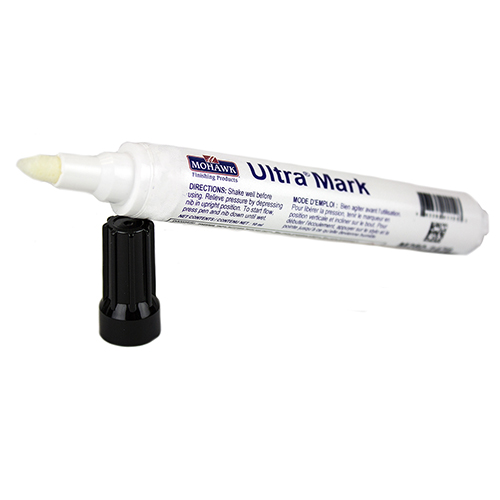Choosing the Right Touch-Up Marker
September 16, 2019
<Macro: (,)>

Mohawk Consumer Products manufactures several types of touch up
markers so you can repair a large variation in finish types. This
can make it confusing so it's important to evaluate your finish and
situation so you can pick the right marker.
Ultra® Mark Markers are pigment markers
that are available in stain colors but with much lower pigment
levels than a paint marker. They will stain wood with a similar
look to the original finish without covering the view of the
wood.
Our pigmented Ultra® Mark Markers range from opaque to
semi-transparent stain colors. Colors in the white families will be
more opaque while stain colors with wood tone names are more
transparent.

These are valve type markers that contain pigment color that
will settle, so they must be shaken to re-mix the pigments to
maintain their intended color. This type of marker has a valve
behind the tip that must be activated to allow the material to flow
through for application. The material behind the valve remains in a
chamber where it can be mixed prior to use. This arrangement
doesn't allow for continuous flow like that of a capillary marker
which wicks out fluid as long as the tip demands it and until it's
depleted.

Pigment stains contain color particles, an oil or water-based
carrier and a binder that hold them onto the wood. Pigment
particles are larger than dyes and tend to remain on the surface of
the wood and can provide more hiding or coverage.
Pro-Mark® Markers contain dye
colors which don't settle out of the marker fluid. For this reason,
they can flow through a capillary process so there's no mixing or
valve to worry with. A real advantage of continuous flow is the
ability to color long table edges which are prone to wear without
stopping to replenish the tip. You can't beat a Pro-Mark® for ease
of use and convenience when it fits your application.
TIP: Because the Pro-Mark® Markers are gravity
fed, it is recommended to store them lying down.

Dyes are transparent and won't hide the wood features. If a
finish was colored with dye originally then a dye would be
appropriate for touch up as well. In many cases a dye is sufficient
for repair on a pigmented finish as well. Dye colored stains
contain colorant and a solvent carrier such as alcohol, oil or
water. Dye particles are much smaller than pigments allowing them
to penetrate into the wood coloring from within. Dye stains provide
excellent clarity. Since the dyes do penetrate more freely into raw
wood and they can go darker than expected in cross grain scratches
which can catch you off guard.
Ultimately, test your marker out to ensure the color matches
before beginning your repair. The right color can make the
difference between a flawless repair and a DIY disaster.